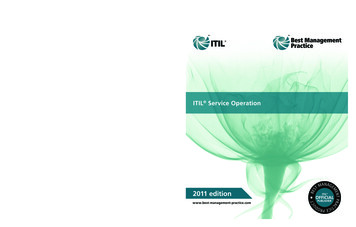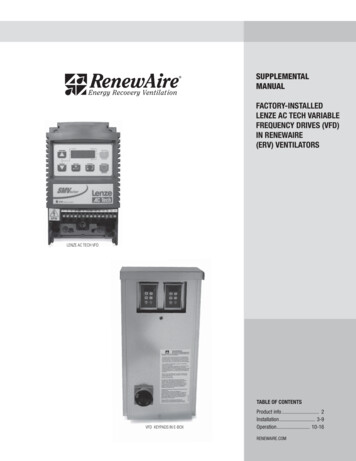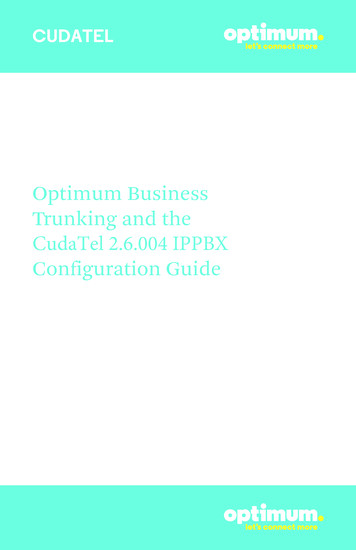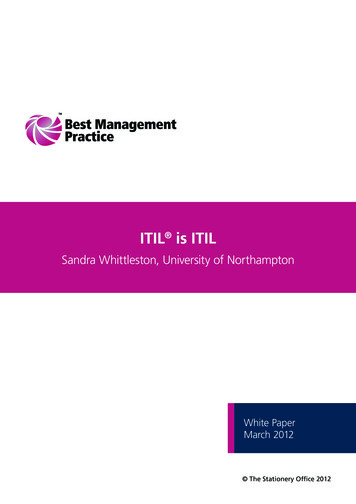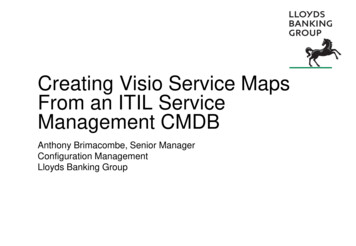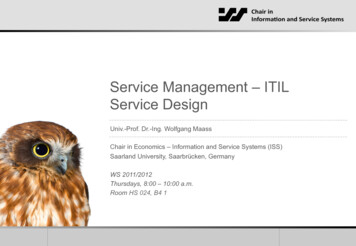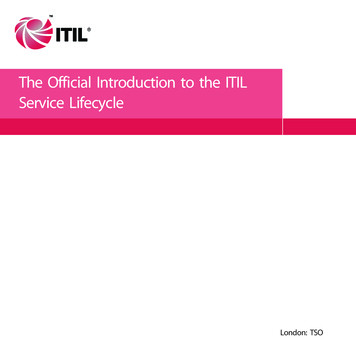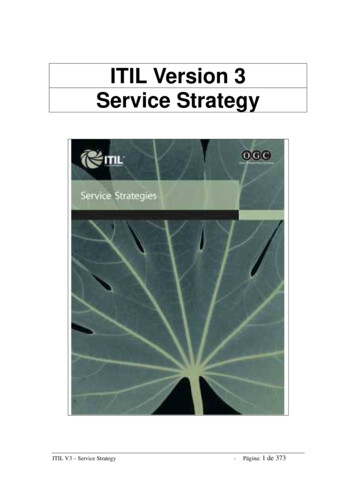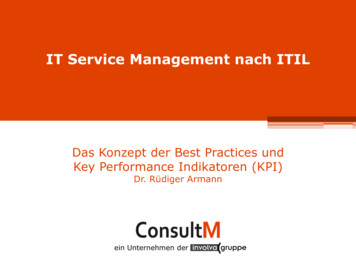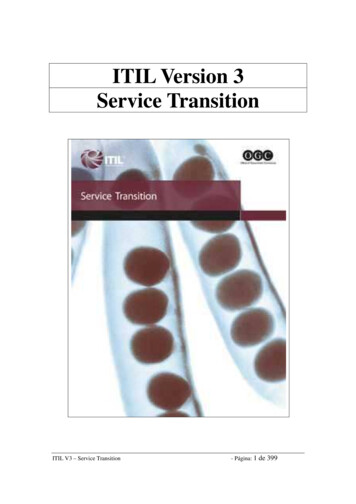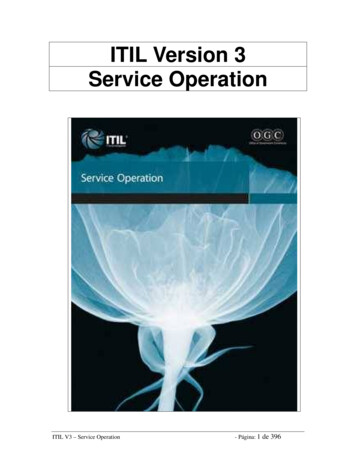
Transcription
ITIL Version 3Service OperationITIL V3 – Service Operation- Página: 1 de 396
The ITIL Core consists of five publications. Each providesthe guidance necessary for an integrated approach, asrequired by the ISO/IEC 20000 standard specification: Service StrategyService DesignService TransitionService OperationContinual Service Improvement.ITIL V3 – Service Operation- Página: 2 de 396
I N D I C EForeword.12OGC’s foreword . 12Chief Architect’s foreword . 13Preface .14Contact information . 14Acknowledgements.15Chief Architect and authors. 15ITIL authoring team . 15Mentors . 15Further contributions . 15The ITIL Advisory Group . 16Reviewers . 161 Introduction .171.1 Overview . 181.2 Context. 191.2.1 Service Management. 191.2.2 Good practice in the public domain . 191.2.3 ITIL and good practice in Service Management. 211.2.3.1 Service Strategy.221.2.3.2 Service Design.231.2.3.3 Service Transition .231.2.3.4 Service Operation .241.2.3.5 Continual Service Improvement .241.3 Purpose. 261.4 Usage. 261.5 Chapter overview . 272 Service Management as a practice.282.1 What is Service Management? . 282.2 What are services? . 302.2.1 The value proposition . 302.3 Functions and processes across the lifecycle. 312.3.1 Functions . 312.3.2 Processes. 312.3.3 Specialization and coordination across the lifecycle . 322.4 Service Operation fundamentals. 332.4.1 Purpose/goal/objective . 332.4.2 Scope. 332.4.3 Value to business . 342.4.4 Optimizing Service Operation performance . 352.4.5 Processes within Service Operation. 352.4.5.1 Event Management .352.4.5.2 Incident and Problem Management .352.4.5.3 Request Fulfilment .362.4.5.4 Access Management .362.4.6 Functions within Service Operation. 362.4.6.1 Service Desk.362.4.6.2 Technical Management.362.4.6.3 IT Operations Management .372.4.6.4 Application Management.372.4.6.5 Interfaces to other Service Management Lifecycle stages .37ITIL V3 – Service Operation- Página: 3 de 396
3 Service Operation principles .393.1 Functions, groups, teams, departments and divisions . 403.2 Achieving balance in Service Operation . 423.2.1 Internal IT view versus external business view . 423.2.2 Stability versus responsiveness . 453.2.3 Quality of service versus cost of service . 483.2.4 Reactive versus proactive . 513.3 Providing service. 563.4 Operation staff involvement in Service Design and Service Transition. 573.5 Operational Health . 583.6 Communication . 603.6.1 Meetings . 613.6.1.1 The Operations meeting.623.6.1.2 Department, group or team meetings .633.6.1.3 Customer meetings .633.7 Documentation . 644 Service Operation processes .654.1 Event Management . 674.1.1 Purpose/goal/objective . 674.1.2 Scope. 674.1.3 Value to business . 684.1.4 Policies/principles/basic concepts . 694.1.5 Process activities, methods and techniques . 704.1.5.1 Event occurs .714.1.5.2 Event notification.714.1.5.3 Event detection .724.1.5.4 Event filtering .724.1.5.5 Significance of events .724.1.5.6 Event correlation .744.1.5.7 Trigger.744.1.5.8 Response selection.754.1.5.9 Review actions.784.1.5.10 Close event .784.1.6 Triggers, input and output/inter-process interfaces. 794.1.7 Information Management. 804.1.8 Metrics . 804.1.9 Challenges, Critical Success Factors and risks . 814.1.9.1 Challenges .814.1.9.2 Critical Success Factors.814.1.9.3 Risks .824.1.10 Designing for Event Management . 824.1.10.1 Instrumentation .834.1.10.2 Error messaging.834.1.10.3 Event Detection and Alert Mechanisms .844.1.10.4 Identification of thresholds .844.2 Incident Management. 864.2.1 Purpose/goal/objective . 864.2.2 Scope. 864.2.3 Value to business . 864.2.4 Policies/principles/basic concepts . 874.2.4.1 Timescales.874.2.4.2 Incident Models.874.2.4.3 Major incidents.884.2.5 Process activities, methods and techniques . 894.2.5.1 Incident identification .904.2.5.2 Incident logging.914.2.5.3 Incident categorization .92ITIL V3 – Service Operation- Página: 4 de 396
4.2.5.4 Incident prioritization .944.2.5.5 Initi
ITIL V3 – Service Operation - Página: 2 de 396 The ITIL Core consists of five publications. Each provides the guidance necessary for an integrated approach, as required by the ISO/IEC 20000 standard specification: Service Strategy Service Design Service Transition Service .
